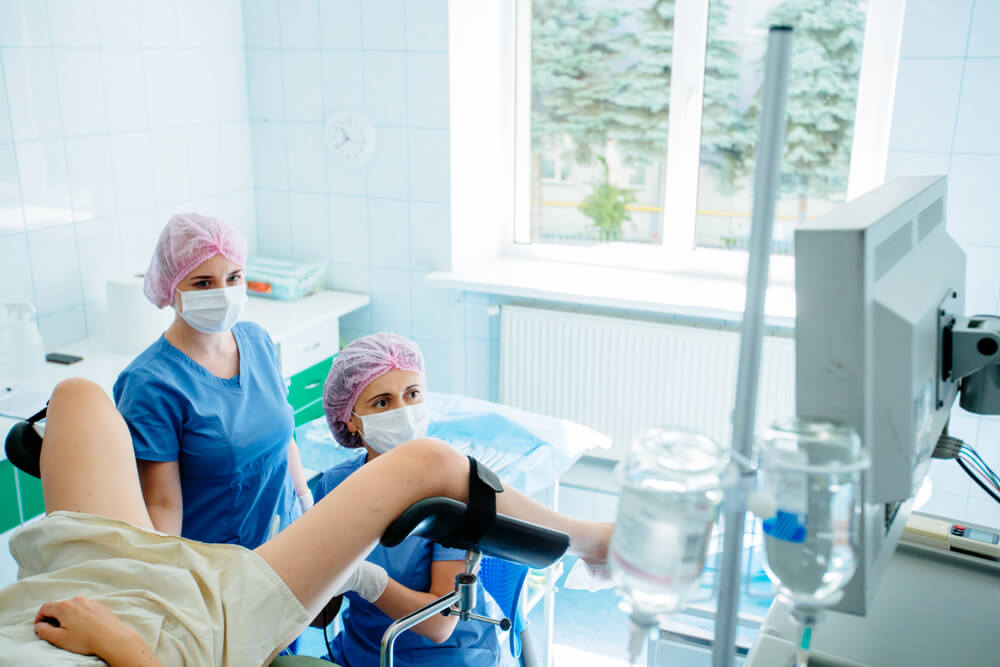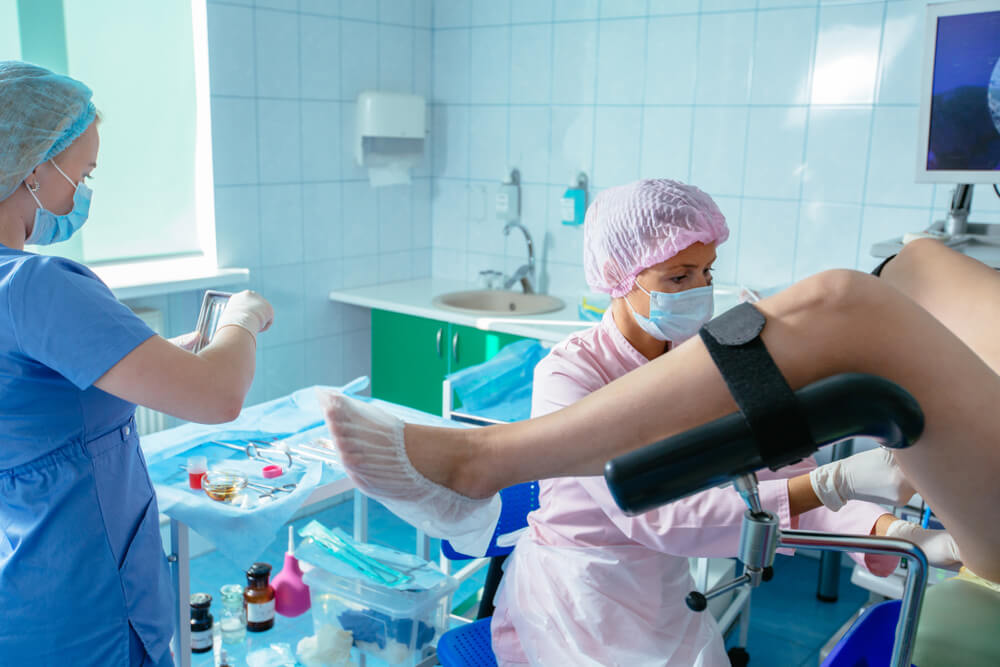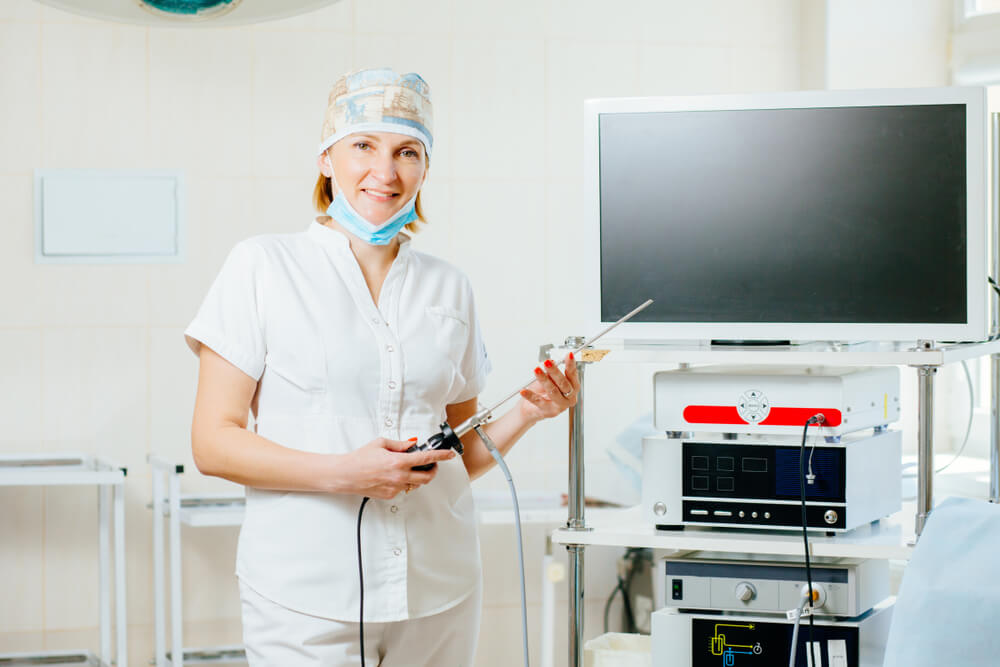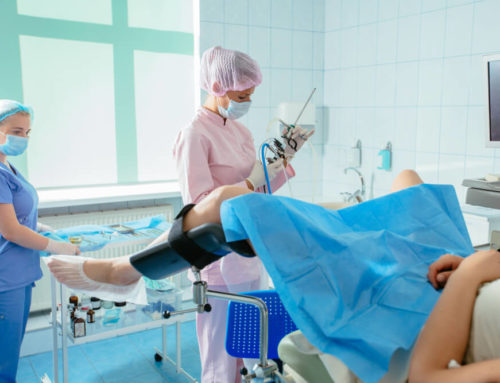One of the first questions someone who visits this page might have is what is a hysteroscopy, so let us start by answering that. A hysteroscopy is a medical procedure during which your physician inserts a thin, lighted tube with a small camera into your uterus to examine the inside and have a closer look at your cervix. Apart from helping them diagnose certain issues, a hysteroscopy procedure can also be done for surgical purposes.
A hysteroscopy can be done in an outpatient center, at your doctor’s consultation rooms, or at a medical center that provides gynecology services. Depending on the complexity of the procedure, general, regional, local, or no anesthesia may be necessary. The hysteroscopy recovery time is typically only a few days.
Note: Pregnant women should not undergo a hysteroscopy procedure.
What Is a Hysteroscopy?
In the introduction, we already provided a quick answer to what a hysteroscopy is. Let us now delve a bit deeper into the actual procedure. A hysteroscopy procedure will start with the patient assuming the same position as during any other gynecological examination: with her feet placed in the stirrups at the examination table’s end. The doctor will use an antiseptic solution to clean the vaginal area. Before they insert the hysteroscope, they will also dilate your cervix.
Next, the hysteroscope will be inserted via your cervix – first into the vagina and then into the uterus. The doctor will inject a carbon dioxide gas or liquid via the hysteroscope into your uterus to expand it to get a clearer view. It will allow them to look at the uterus walls and the fallopian tubes and take videos, pictures, or biopsies (tissue samples).
The doctor will gently remove the equipment when the hysteroscopy has been completed.
By now, you should have a fairly clear idea about exactly what is a hysteroscopy procedure. Next, we will discuss the question ‘why a hysteroscopy?’.
Reasons Why Your Doctor Might Recommend a Hysteroscopy

- Bleeding that continues after menopause
- Heavy periods
- To take a biopsy
- Before a dilation and curettage (or D&C) procedure
- To examine and, if necessary, remove polyps, fibroids, scarring, uterine septum, or embedded intrauterine devices (IUDs)
- In conjunction with a laparoscopic procedure
What Does the Term Operative Hysteroscopy Mean?
This term implies that if anything abnormal is seen during the hysteroscopy procedure, the doctor performing the surgery will remove the abnormality. This is often a polyp, fibroid, embedded IUD, scar tissue, etc. Removal is often straightforward and can be accomplished with small surgical tools.
How Long Does a Hysteroscopy Normally Take?
A typical hysteroscopy can take anywhere from five minutes to an hour. Exactly how long it will take your doctor to perform a hysteroscopy depends on whether it’s for diagnostic purposes or involves hysteroscopy surgery and whether or not they must perform additional work, for example, a laparoscopy. As a general rule, an operative hysteroscopy takes longer than a diagnostic one.
Are There Any Risks Involved With a Hysteroscopy?
Generally speaking, a hysteroscopy is a very safe procedure. However, as with any other procedure, complications might arise in a small minority of cases (less than one percent). These could include:
- A negative reaction to the gas or fluid the doctor uses to expand your uterus
- A negative reaction to the anesthesia
- Severe bleeding
- Infection
- Intrauterine scarring
- Suffering an injury to your uterus, bladder, cervix, or bowel
How Should I Prepare for a Hysteroscopy?
Before the actual procedure, the doctor will explain the process to you and you will get an opportunity to ask questions at your pre-operative visit. You might also be requested to sign a form to agree to the procedure. The doctor will often do a physical examination to ensure that you are in good health.
Blood work and other tests may also be required. You might also be requested not to eat anything within a certain time before the procedure.
Whether the doctor wants to perform hysteroscopy surgery or not, you will get general, local, or regional anesthesia. You should inform the doctor if you are allergic or sensitive to anesthesia, iodine, tape, latex, or any specific type of medication. Also, make sure they know about all medicines you are taking, whether prescription, OTC (over-the-counter) or herbal.
Your physician should also be informed if you are taking aspirin, anticoagulants, or any other type of medication that affects blood clotting. You may be asked to cease using any or all of these before the hysteroscopy.
Make sure to tell the doctor if you suffer from a bleeding disorder. They might give you a sedative before the hysteroscopy to make you more relaxed. In that case, arrange for somebody to take you home afterward. On the day of the procedure, make sure you wear comfortable clothes that can be easily removed.
What Will Happen Immediately After I Undergo a Hysteroscopy?
If the doctor used anesthesia (regardless of whether it is general or regional) during the process, they may decide to observe you for a few hours before you can go home. You might experience a small amount of vaginal bleeding or cramps for the next day or two.
It is also common after general anesthesia for patients to feel a little nauseated or constipated afterward. The hysteroscopy recovery time usually is short, and all side effects should go away within a day or two. Contact your physician immediately if you experience symptoms such as heavy bleeding, vaginal discharge, or very bad pain in your abdominal region.
Depending on the circumstances, your physician could prescribe painkillers to make the recovery process a bit easier. If the hysteroscopy involved surgery, they might ask you to rest for one or two days before continuing with your normal daily activities. If you carefully follow the instructions, you should feel fine within a few days.
Note: If you underwent a hysteroscopy that involved surgery, you will have to put sexual activities on hold for at least one to two weeks to minimize the chances of infection.
What Is the Longer-Term Outlook Following a Hysteroscopy?
The risks involved with a hysteroscopy are very low. The hysteroscopy recovery process is typically quick, and generally speaking, there are no lasting negative effects. There is, however, the possibility that the doctor might want to take a closer look at a specific issue or that additional hysteroscopy surgery might be needed. If that is the case, you will get an opportunity to ask all the questions that might be bothering you.
When Is the Best Time to Undergo a Hysteroscopy?

Your physician might recommend that the hysteroscopy be scheduled for the first week following your menstrual period. This will give them the most precise possible view inside your uterus. A hysteroscopy is often also carried out in postmenopausal females to determine the reasons for unexplained spotting or bleeding.
What Are the Advantages of a Hysteroscopy Over Other Similar Procedures?
Compared to certain other procedures that are more invasive, a hysteroscopy comes with the following benefits:
- It could possibly eliminate the need for a hysterectomy
- It might also eliminate the need for ‘open’ surgery
- Your stay in the hospital is drastically reduced
- The hysteroscopy recovery time is much shorter than for many other procedures
- After the procedure, you will not need so much pain medication
The Bottom Line: How Did We Do?
We believe we have covered most of the essential issues about undergoing a hysteroscopy in this article. Do you agree, or do you still have one or more nagging questions? If that is the case, please head straight to our website, where you will find more information about this and the other services we provide. Once there, you will also be able to arrange an appointment.



